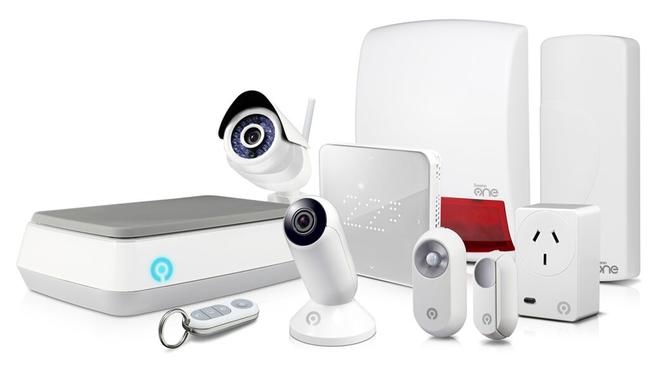DIY system keeps you safe as houses
This home security system alerts you when there’s an intrusion, and lets you monitor your home via an app on your phone.

If you’re a small business needing inspiration, look no further than David Swann, who in 1987 began making modems in his Melbourne basement.
Then he got into designing and producing home security systems, selling the gear into 40 countries, including China, Russia and the US. That company, Swann Communications, was sold to US surveillance manufacturer Infinova Group last year for a reported $US87.5 million.
Swann now is back as SwannOne, providing affordable internet-connected security systems, which were on display at the Consumer Electronics Show in Las Vegas in January. I’ve been trialling its $699 kit, which is now available in Australia.
There’s lots of recent criticism of the connected home: that offerings don’t save time and energy, and that it’s still for geeks and not the public at large.
But by focusing on DIY internet home security and keeping installation simple, Swann has a connected home product that’s to the point. It’s for people who would otherwise buy a traditional home security system comprising a wall-mounted keypad connected to a security call centre. But with internet connectivity, you get more comprehensive surveillance.
My review kit consisted of a smart hub, two window/door sensors, a motion sensor, security camera and a key fob. You control your system through a web-based console. It’s similar in concept to a kit produced by the now-defunct Ninja Blocks start-up in 2013 but more developed.
The key fob lets you turn security on and off as you enter and leave home, or partially turn on security at night away from sleeping areas. You tell the console which sensors are to operate and when. It has a personal alarm button.
Installation was mostly straightforward. I connected the hub to my home router and then, using the console, installed each device in turn. Getting the camera connected took longer than other sensors. But there are videos instructions.
You don’t need to drill holes or install devices with screws. There’s the provided two-sided tape.
Most sensors are powered by AAA batteries, which may annoy some. The idea is your security system will still work if the power goes down. And Swann says batteries in most sensors last a year.
The only power-dependent devices in my kit were the hub and camera. The hub, however, has a six-hour backup battery for shorter outages so the security system can stay online. Soon you’ll be able to connect a 4G dongle if you want continued internet connectivity during outages.
There’s a USB slot at the top of the hub for an external hard drive to record camera video. I’m told it will be available after a system update.
You can buy extra sensors, energy devices, wireless door locks and sirens. One sensor will alert you over the internet when your smoke detector is triggered. The hub and cameras can also detect glass breakages, gun shots, a baby’s cry and a car alarm.
Swann’s ecosystem is being tweaked so you can operate Philips Hue lights, Quickset and Lockwood smart locks, and Swann plans to sell its own remotely operated light bulbs.
Swann says control centre monitoring will come to Australia soon. So when an intruder triggers a sensor while you are out, a control centre can act. That includes contacting police. You’ll pay for this, but Swann says it will be cheap compared with other services. You can also monitor your home system through the SwannOne app.
As with a traditional security system, you can specify a grace time after pressing the fob before the alarm is active or for when you enter the premises before deactivating the system.
There are also rules. You can nominate who is contacted when a chosen sensor sees motion, or specify a time to activate or deactivate a sensor, but the options are pretty basic.
SwannOne uses ZigBee networking to connect to devices. You can extend the network range in larger homes by installing a smart plug, which will be available around October.
While most monitoring is free, you pay $13.95 a month for more extensive monitoring. And you’ll need a subscription if you want security video stored in the cloud.


